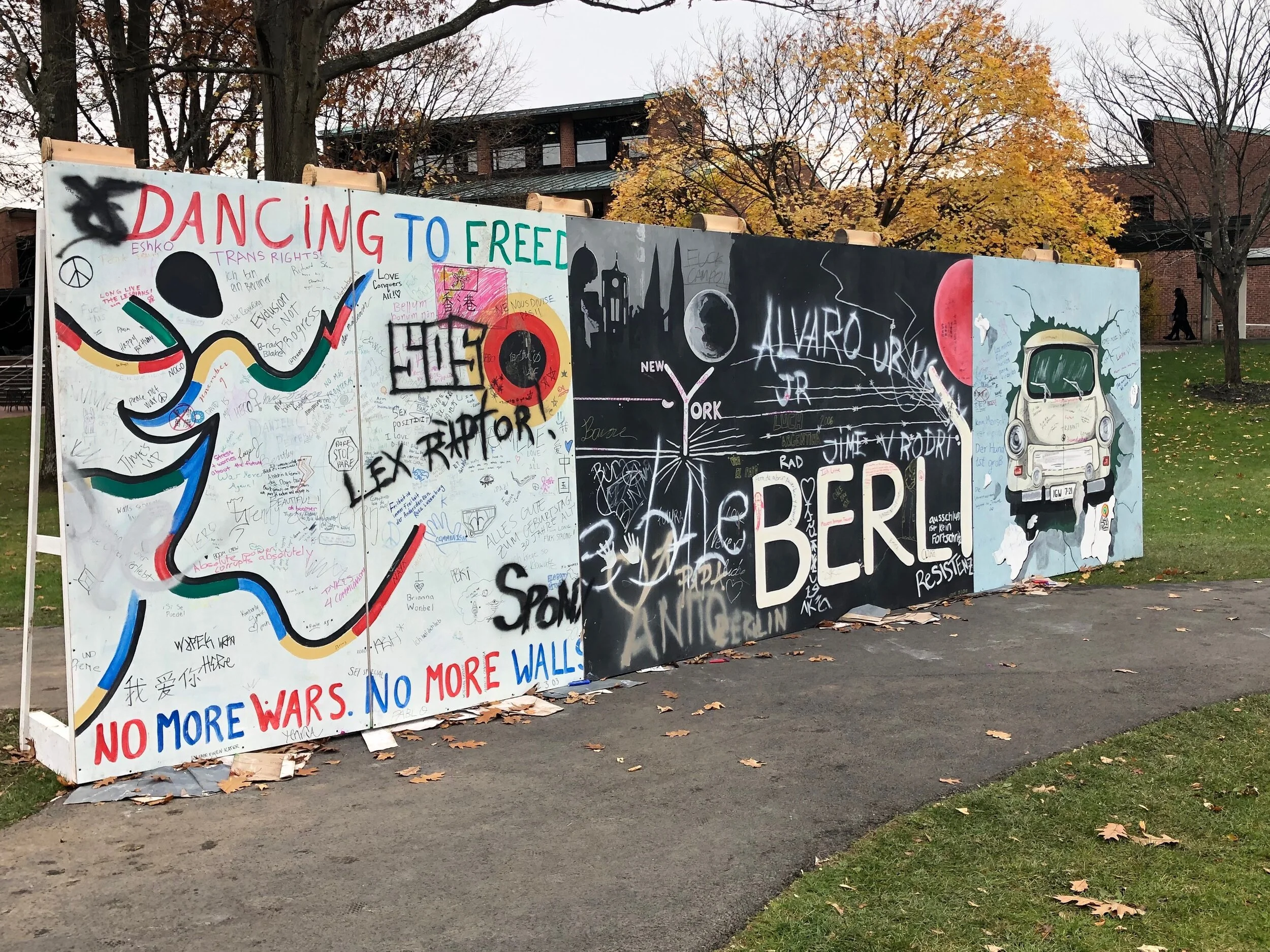Photo taken from Daily Bulletin
Almost 60 years ago, a wall was constructed in Germany to divide the city of Berlin into two sections, East and West, during the Cold War. It was done with the intention of stopping those in the Soviet- allied East from escaping into the US- allied West. However, this did not prevent people from expressing their emotions over the separation, resulting in beautiful and meaningful murals being painted on the wall. Now, on the 30th anniversary of its demolition on November 9th, the symbolism marked on the concrete will never be forgotten.
This art in the time of separation is reflected in Professor Petra Watzke’s class “The Berlin Wall,” which created a mock wall on the Green on campus. The campus wall reflects the same opposition and anger against separation that the real Berlin Wall depicted. With phrases such as “peace not war” and “exclusion is not progress,” the small- scale barrier evokes the same resentment towards those trying to disregard a specific group of people.
The actual wall had murals and graffiti covering the West side but not on the other, since those on the East side were not allowed to get close enough to express their feeling in the same way. During this terrible time of separation and pain, people depicted their emotions and anger on the cause of their unrest on the wall.
Since November 9th, 1989 when the wall fell, pieces of the decorated concrete have been shipped to many different cities all over the world, showing little snapshots of just what people were going through during an event that seemed unimaginable to those who didn’t live through it.
The wall also gives hope, seeing as the same will to fight is even more present now than it was sixty years ago. Even though Skidmore’s own wall is nothing like the 87 mile wall in Berlin, they both share similarities and connect the present to the past.
Thierry Noir, a French artist credited with being the first street artist to paint on the western side of the wall created these famous heads.During the time, street art was considered vandalism, so was a hard act to perform.
Noir stated that he “decided spontaneously to start to make something on the wall. I got thousands of questions - everyone wanted to know something about this - because it was new - there were no big paintings on the wall."
For five years during the 1980s, he illegally created this piece, dodging police and border patrols. Because of this, the mural depicts few colors and simple shapes so as to quickly finish.
Russian artist Dmitri Vrubel created one of the most famous pieces of art that is known today. The mural depicts Soviet Leader Leonid Brezhnev and East German President Erich Honecker sharing a kiss as a form of unity of the two sides during separation.
Painted by Birgit Kinder, a Trabant car is depicted breaking through from the east side of the wall. This car is recognized as part of the German Democratic Republic, and symbolizes the collapse of the east side of the separation. This piece of art is also seen on the small replica of the wall that sits in the middle of the green on campus. Even thirty years later, the mural still holds the same weight and proves to be an extremely meaningful piece.
“Detour to the Japanese Sector”
Painted by East German artist Thomas Klingenstein, the mural shows gates opening up to Japan, a place where East Germans were not allowed to travel to or learn about. This piece evokes the desire that many German’s felt of traveling to a place far away from the gloomy town they were in.
In 1989, Gabriel Heimler painted this mural of a West German jumping over the wall to the East side. As unusual as this sounds, the painting is meant to represent a symbolic gesture of freedom towards the East Germans, who were much more restricted than the West Germans.
Today, you can find original pieces of the wall all over the world, including in Syracuse, Rochester, Hyde Park and New York City, among many other locations.





